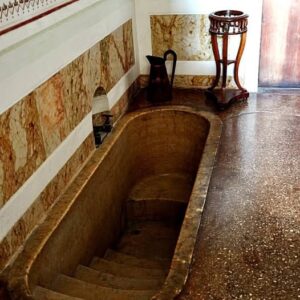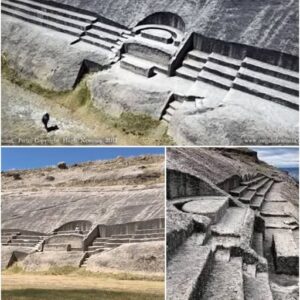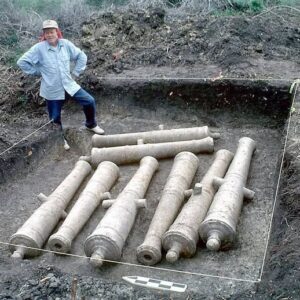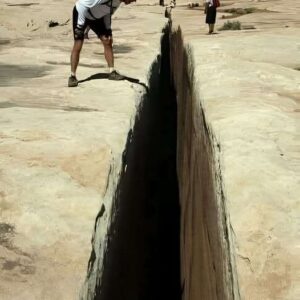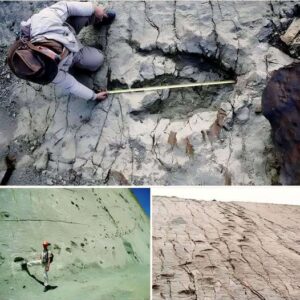An ancient mosaic floor, hidden beneath the layers of time due to the catastrophic eruption of Mount Vesuvius nearly two millennia ago, has resurfaced at the Villa de Papyri, an opulent Roman retreat nestled along the shores of Herculaneum. This remarkable archaeological find offers a mesmerizing glimpse into the lavish lifestyle enjoyed by the elite residents of this seaside paradise during the height of the Roman Empire.
The Villa de Papyri, a luxurious sanctuary renowned for its grandeur and beauty, was engulfed by the fury of the volcanic eruption that swept through the region in 79 AD. The volcanic ash and molten lava that blanketed the area preserved the villa and its treasures in a time capsule, safeguarding them for future generations to unearth and admire.

The exquisite mosaic floor, painstakingly crafted by skilled artisans of antiquity, features intricate patterns and designs that showcase the artistic sophistication of the era. Each tile tells a story, weaving together a tapestry of color and form that reflects the cultural richness and aesthetic sensibilities of Roman society.
The rediscovery of this ancient mosaic not only provides valuable insights into the architectural prowess of the Romans but also serves as a poignant reminder of the fragility of human existence in the face of natural disasters. The Villa de Papyri, now a UNESCO World Heritage Site, stands as a testament to the enduring legacy of a bygone era, inviting visitors to step back in time and marvel at the splendor of ancient Roman civilization.
As archaeologists continue to meticulously uncover the secrets buried beneath the ashes of Vesuvius, each new discovery sheds light on the lives and customs of the inhabitants of Herculaneum, offering a glimpse into a world long lost to the sands of time. The mosaic floor at the Villa de Papyri is a poignant symbol of resilience and the enduring power of art and beauty to transcend the boundaries of history and connect us to our shared human heritage.
